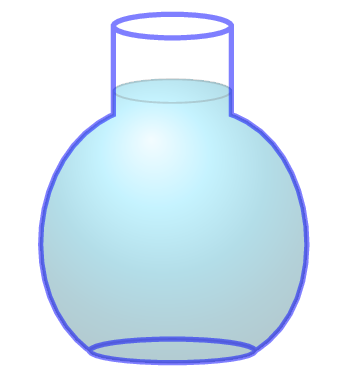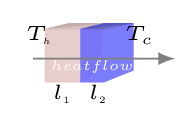Given: \(m=10 \,g =0.01\,kg, \quad v_{1}=500 \,m/s,\quad v_{2}=0,\) \(c_{Pb} = 128 \,J/kg.^{o}C,\) \(T_{1} = 327.3^{o}C, \quad T_{o}=30^{o}C, \) \(L_{f} = 2.45\times 10^{4} \,J/kg, T_{f} =?\)
Heat produced by bullet = change in kinetic energy of bullet.
\begin{equation*}
Q=E_{k}
\end{equation*}
\begin{equation*}
or,\quad mc(T_{1}-T_{o})+mL_{f}+mc(T_{f}-T_{o})=\frac{1}{2}m(v_{1}^{2}-v_{2}^{2})
\end{equation*}
\begin{equation*}
\text{or,}\quad c(T_{1}-T_{o})+L_{f}+c(T_{f}-T_{1})=\frac{1}{2}(v_{1}^{2})
\end{equation*}
\begin{equation*}
\text{or,}\quad 128 (327.3-30) +2.45\times 10^{4} + 128 (T_{f}-327.3)= \frac{1}{2}(500^{2})
\end{equation*}
\begin{equation*}
\text{or,}\quad -3840 +2.45\times 10^{4} + 128 T_{f}= 125000
\end{equation*}
\begin{equation*}
\text{or,}\quad 128 T_{f}= 125000+3840-2.45\times 10^{4} = 104340
\end{equation*}
\begin{equation*}
\qquad \therefore \quad T_{f} = 815^{o}C
\end{equation*}





